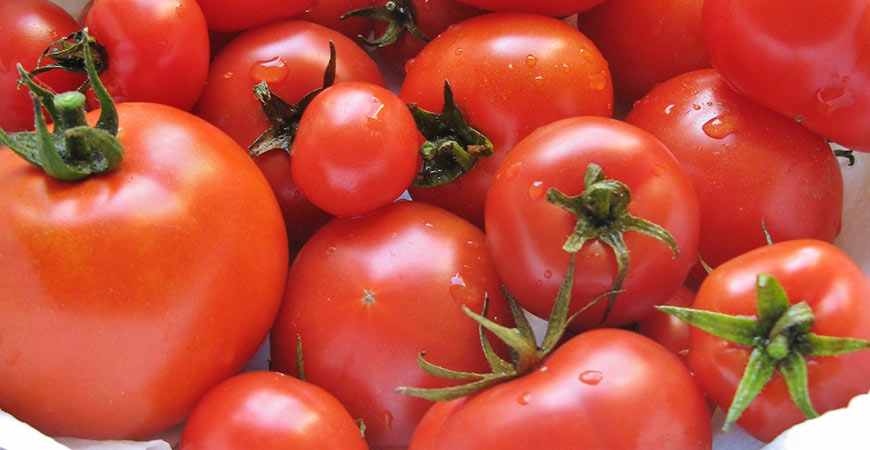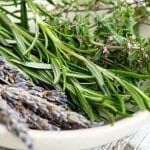
Use these 5 Tips and Discover how to Grow the Best Tomatoes this Year
It’s easy to see where our love affair with tomatoes comes from. What other vegetable brings deliciousness to your favorite sandwich, your grilled steak kabobs, or even your famous game night guacamole?
The hothouse tomatoes at the grocery store are pretty pitiful compared to the pride of your garden. Therefore, it’s worth it to get out there and do some planting. But, if you’re not careful, things like pests, blossom rot, or disease can ruin your harvest.
Read on for 5 key tips to help give your tomato plants what they need—allowing you to maximize your harvest this year and grow a bumper crop of delicious tomatoes!
For Your Tomatoes, Sun = Life
Tomatoes originated in sun-soaked South America, and the many descendants of those ancient Andean cultivars need the sun just as much as their ancestors did. Starve your tomatoes off the sun’s rays, and you’ll find yourself starving for tomatoes come harvest-time.
This issue isn’t quite as cut-and-dried as it may seem, though. Here are a few pointers to keep in mind when it comes to making sure your tomatoes get adequate sunlight.
- In the vast majority of the U.S., plant your tomatoes where they will receive direct sunlight during the entire day or most of the day. The only exception to this rule is if you live in scorching and sunny areas such as Death Valley or Puerto Rico, where tomatoes require less direct sunlight.
- As you plant your garden, keep in mind that other plants have the potential to block your tomatoes’ sun as they grow. Spacing and strategic planting are essential to prevent this from happening. For example, don’t put a tall cucumber trellis next to your tomatoes on the eastern side, where it will block that lovely morning sunlight.
- While tomatoes love the sun, seedlings are still sensitive to sun shock during transplant. Transplant seedlings into your garden on a cloudy day or in the morning. This gives the tender plants time to adjust.
- Don’t water your tomatoes during the brightest part of the day; any water that you accidentally get on the leaves can lead to leaf burn.
Give Your Tomatoes the Right Amount of Water in the Right Way
Tomatoes need a steady, even supply of water to thrive and supply you with lots of large, delicious fruit. If the water supply isn’t adequate, all sorts of problems can develop.
Not only can your tomato plants become puny, grow fewer fruit, and even die–some of the problems your plants have can be caused by watering problems without you even knowing about it.
For example, “blossom rot,” which starts as a gray patch on the end of the fruit and spreads until half of the fruit becomes rotten, is often the result of a calcium deficiency caused by uneven watering. Poor drainage can lead to leaf-roll and low fruit production, and overwatering can lead to fruit cracking.
To prevent these issues and keep your tomatoes healthy, make sure your plants have well-drained soil and receive a steady supply of 1 inch of water per week. The National Gardening Association recommends watering in the morning and using an excellent mulch to minimize water loss through evaporation.
Some gardeners get creative in making sure that their tomatoes get a steady water supply.
This gentleman uses a plastic trash can with some mulch inside and two rows of holes in the sides. He partially buries the trash can and then plants tomatoes around the outside of the trash can. He then surrounds the tomato plants with wire supports and periodically fills the trash can with water.
What is your favorite way to water your tomatoes?
How to Feed your Plants
Tomatoes are voracious feeders, which means that they strip the soil of minerals and nutrients. Feeding your tomatoes will boost them, replenishing lost nutrients and leading to a higher yield.
Rotating your tomato crop around your garden during different growing seasons allows your soil to replenish lost minerals. This also helps prevent bacterial and viral infections, which can hang out in your soil during the winter and infect next year’s tomato crop.
Next year plant an unrelated veggie, such as asparagus, in this year’s tomato patch.
For feeding, Organic Gardening Magazine recommends a weekly dose of liquid seaweed, along with a good side-composting.
Protect your Tomatoes from Diseases and Pests
Tomato plants are often trouble-free, but there are plenty of pests and diseases out there that can destroy your tomato crop. For example, as cousins of the potato, tomatoes are susceptible to a type of fungus related to the blight that led to the Great Potato Famine.
Tomatoes are also vulnerable to bacterial and viral diseases. This includes mineral imbalances and pests such as nematodes and hornworms (see photo above).
Here are some tips for protecting your tomato plants:
- Prevention is the first step to protecting your tomato plants from pests and disease. Following the watering guidelines above will help you prevent mineral imbalances that can lead to blossom rot. Blossom rot can also be caused by root damage during transplanting, be sure to handle seedlings very carefully during transplant.
- Consider companion plants to prevent pests. For example, marigolds keep nematodes away.
- Vigilance is key. Keep an eye on your plants. Take a look at your plants daily, including the leaves, stems, blossoms, fruits, and even the undersides of leaves. Note the first sign of change, including discoloration, holes on leaves, a fuzzy substance on the underside of leaves, etc.
- If you aren’t sure what you’re seeing, check it out. Ask at your local gardening center, or check a troubleshooting resource such as this one to help you identify the problem and find a solution. Here is another resource that focuses on identifying tomato pests.
Support your Local Farmers!
The title to this section may be in jest, but unless you allow your tomatoes to sprawl, support is a serious matter for tomato gardeners.
Tomatoes are vines, meaning they grow long stems with fruit at regular intervals. Some gardeners choose to let the vines sprawl on the ground.
However, this method isn’t very popular because it takes up more ground space and is difficult to harvest. Also, it leaves the plants more vulnerable to certain pests and diseases and can lead to smaller yields.
Most gardeners choose to support their tomatoes in some way. Choosing the right support for your tomatoes can make all the difference when it comes to price, convenience, and yield.
Here are some key considerations:
- Before looking at cages or trellises, look at your plants. The first thing you need to know is, are your tomatoes determinate or indeterminate tomatoes? Determinate tomatoes have a blueprint in their DNA that tells them to grow to a set height with a set number of branches, stop there, and produce one batch of fruit. These plants will be more like shrubs at full-grown height and need small to medium-sized support. Indeterminate tomatoes have no such limitations. They “let it all hang out” and will continue to grow and bear fruit as long as the conditions are right. If you live in a warm climate with an excellent, long growing season, such as central Florida, you could easily wind up with a 6-foot tomato plant, and a 4-footer isn’t out of the question in the Midwest. You will also have LOTS of tomatoes.
- Once you’ve figured out how much support your tomato plants will need, you will need to consider 2 things: your budget and building skills. There are many commercial tomato cages and other devices out there for those of us who don’t have the time or desire to build our own, but they can be pretty pricey. A decent do-it-yourselfer with some wire fencing and fence posts can build their own tomato supports pretty cheaply.
- Next, it’s time to think about the type of design you’d like to use. Individual tomato cages are easy to use and tend to give high yields per plant. You can buy commercially-made cages or fashion your own out of chicken wire, or wire fencing and dowels, such as this gentleman did.
- Other methods for supporting tomato plants include staking or trellising plants. Staking is a relatively easy and inexpensive method. But, it tends to lead to lower yields and isn’t usually adequate for indeterminate tomatoes. Trellising can also lead to lower yields. Here is a very informative comparison by the Master Gardeners of Santa Clara County, who tried several methods and listed the pros and cons of each one.
Photo courtesy of Magnus Manske
Stop by our website to learn more about our easy solutions to everyday problems. We make it easy so you can spend less time cleaning and more time enjoying your garden!













